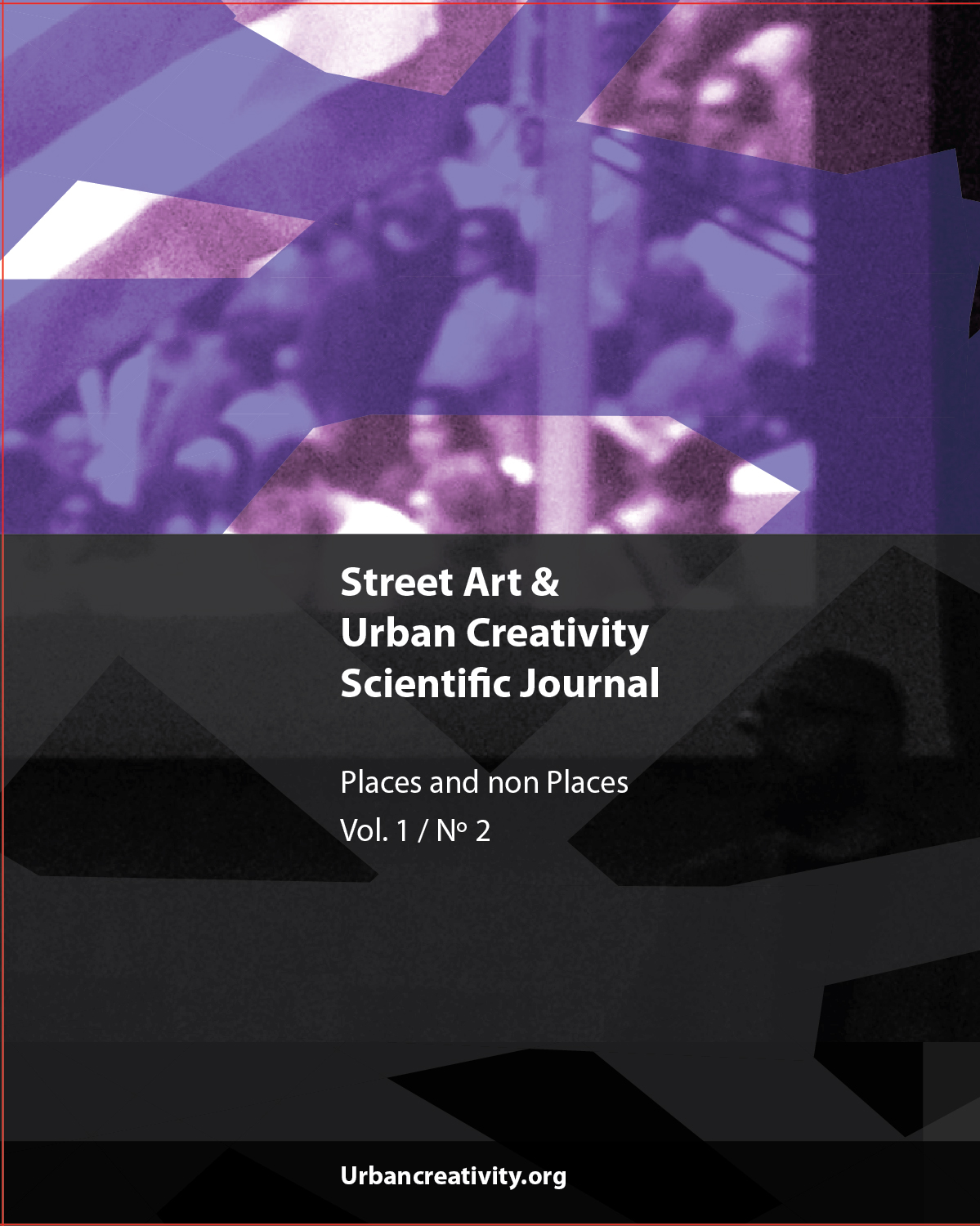Graffiti, Street Art, and Culture in the era of the Global City
The Ana Botella Crew case
DOI:
https://doi.org/10.25765/sauc.v1i2.31Keywords:
Graffiti, Culture, Public space, Internet, Hegemonic urban modelsAbstract
What is the role of art in the reinforcement or rejection of current models of public space management in our cities? To answer this question, we must attend to the ties of all artwork with public institutions, and whether or not it questions the dominant order. In this article, I will focus on the works of the Ana Botella Crew, a group of artists from Madrid, as an example of “artivism” that challenges the City Council’s management of public spaces in Madrid. My aim is to explore how useful internet tools can be to articulate artistic interventions that challenge the hegemonic uses of public space, in what Sassen has called the global city.
Downloads
Global Statistics ℹ️
|
154
Views
|
137
Downloads
|
|
291
Total
|
|
Downloads
Published
How to Cite
Issue
Section
License
Copyright (c) 2015 Street Art & Urban Creativity

This work is licensed under a Creative Commons Attribution-NoDerivatives 4.0 International License.
Those authors who publish in this journal accept the following terms:
-
Authors retain copyright.
-
Authors transfer to the journal the right of first publication. The journal also owns the publishing rights.
-
All published contents are governed by an Attribution-NoDerivatives 4.0 International License.
Access the informative version and legal text of the license. By virtue of this, third parties are allowed to use what is published as long as they mention the authorship of the work and the first publication in this journal. If you transform the material, you may not distribute the modified work. -
Authors may make other independent and additional contractual arrangements for non-exclusive distribution of the version of the article published in this journal (e.g., inclusion in an institutional repository or publication in a book) as long as they clearly indicate that the work was first published in this journal.
- Authors are allowed and recommended to publish their work on the Internet (for example on institutional and personal websites), following the publication of, and referencing the journal, as this could lead to constructive exchanges and a more extensive and quick circulation of published works (see The Effect of Open Access).













